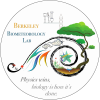Reports
Contents
| Title: | Sherman Wetland Temp Tower - NDVI (SRS) | ||||||||||||||||||||||||
| Date: | 2020-02-04 - 2020-11-12 | ||||||||||||||||||||||||
| Data File: | SWt1_NDVI.csv EPSWt1HS_SRS.csv |
||||||||||||||||||||||||
| Refers to: | SW,2046503368,2046503402 | ||||||||||||||||||||||||
|
Various sensors measuring NDVI have been installed across the Delta sites over the last several years. At some sites, the SRS sensors from Decagon/METER have been drifting low, so I wanted to compare them with other NDVI measurements.
For some sites with I also compared GCC with the various NDVI values to see how much GCC values varied year over year. Photos were taken by a variety of cameras: Netcam Stardot cameras (the official camera of the Phenocam Network®), Canon point-and-shoot cameras with custom firmware, or a Raspberry Pi camera. I used Joe's datafetch tool to calculate daily average mid-day values of NDVI and GCC from the various sensors. Mid-day values included data from 11:00 to 13:00, 5 values a day. I despiked the data in Excel.
See reports for other Delta sites here: East Pond / Sherman Wetland Temp Tower (both sites had same set of SRS sensors) Twitchell Alfalfa / Sherman Barn (both sites had same set of SRS sensors) Â
ÂFigure 1. Sherman Wetland Temp Tower NDVI. Unfortunately the 650in bad was bad from the beginning, so we can't use the SRS NDVI as is. SRS NDVI is negative through the winter and is about 0.3-0.4 lower than broadband NDVI year round. We might be able to substitute incoming bands from the SRS at the permanent Sherman Wetland tower. Â Figure 2. Individual bands of SRS sensor. No obvious decay seen through the 10 months of data, but 650in is lower than 850in (650in should be higher than 850in), so we know something is wrong with 650in. Â Figure 3. Incoming bands from sn 2046503368 over 3 sites: East Pond (2018-Jan 2020), SW Temp Tower (Jan-Nov 2020), Hill Slough (March-May 2021). Something happened at the end of 2019 or the beginning of 2020 that caused this sensor to become bad. Incoming data at SW Temp Tower and at Hill Slough are all bad. The end of East Pond data also looks bad as NDVI verges into the negative. Â Figure 4. Outgoing bands from sn 2046503368 over 3 sites: East Pond (2018-Jan 2020), SW Temp Tower (Jan-Nov 2020), Hill Slough (March-May 2021). Something happened before or during deployment at Hill Slough, so all outgoing data at HS is also bad. Â Figure 5. Red reflectances from SRS data. 650in was bad so don't use this data. Â Figure 6. NIR reflectances from SRS data. Â
Figure 7. Linear regression between SRS and broadband NDVI. The fits is pretty good (R2=0.98), so we could use broadband NDVI to correct the SRS NDVI data. Â Figure 8. Timeseries of GCC and SRS data. GCC peaks in early June and then immediately starts decreasing. NDVI stays high from June to early August before decreasing. Â
Figure 9. Linear regression between GCC and SRS data. Clusters at the high and low end of the regression. |
|||||||||||||||||||||||||
| |

